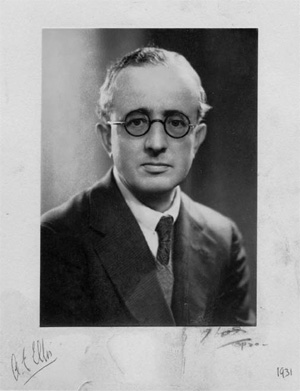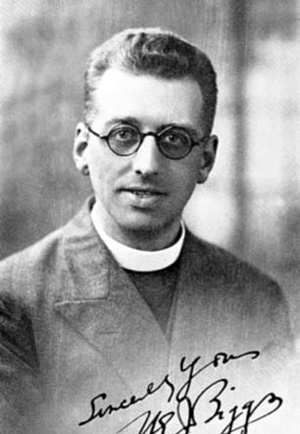While looking through some early issues of our magazine’s predecessor, The Conchologists’ Newsletter, I came across some autobiographical notes written by two very eminent conchologists of the first half of the 20th century, describing the moments when they first became ‘hooked’ on shells. Editor Peter Topley has recently (and probably unwittingly) continued this tradition by describing how the discovery of a Chinaman’s Hat on an Isle of Wight beach inspired him to become a conchologist at the tender age of eleven (Mollusc World, No. 20 (July 2009): 4).
A.E. Ellis went on to write ‘British snails: a guide to the non-marine Gastropoda of Great Britain and Ireland, Pleistocene to Recent’ in 1926, which remained the ‘bible’ for British non-marine specialists for over 50 years until the publication of Mike Kerney and Bob Cameron’s ‘Field guide to the land snails of Britain and north-west Europe’ in 1979. Arthur Ellis also had an abiding interest in freshwater bivalves (see his note below) and he wrote three of the acclaimed Linnean Society of London’s ‘Synopses of the British fauna’ on this subject: No. 4 (1946), ‘Freshwater bivalves (Mollusca) (Corbicula, Sphaerium, Dreissena)’ and No. 5 (1947), ‘Freshwater bivalves (Mollusca) (Unionacea), which were later amalgamated and revised to form No. 13 (1962), ‘British freshwater bivalve molluscs with keys and notes for the identification of the species’.
From: The Conchologists’Newsletter, No. 4 (Jan. 1962): 16.
Biographical Note – A.E. Ellis
Probably few conchologists can pin-point the exact time and place at which they first became interested in their hobby. On the afternoon of 20 May 1919, when a sixteen year old boy at Kingswood, I set out to cycle from Bath to Trowbridge, but never reached there. The reason was not an accident or breakdown (such as frequently happened), but the fact that the road ran close to the Kennet and Avon canal near Claverton. Water always exercising an irresistible attraction, I chained up my bicycle (a superfluous precaution) and inspected the canal. The water was shallow and perfectly clear and full of life: a letter I wrote to my sister records swarms of roach, also newts, tadpoles, water rats, water shrews, water beetles, caddis and dragonfly larvae, “and also a great variety of freshwater shellfish.” The dry mud along the banks was also full of empty shells of all sorts; “what surprised me most, however, was the great number of large bivalves, like big mussels.” I had never seen anything like these before, the only freshwater shells I had previously collected being two Lymnaea glabra casually picked out of an old tin in a pond at Sennen in Cornwall.
I took away as many shells as I could accommodate and returned later for more. A copy of Rimmer [= Richard Rimmer (1880), ‘The land and freshwater shells of the British Isles’] in the school reference library enabled the specimens to be identified. My life-long interest in nonmarine Mollusca therefore began at about 3 p.m. on 20 May 1919, where the Bradford-on-Avon road runs by the canal just north of Claverton near Bath. No memorial yet marks the spot.

A.E. Ellis, 1931 (photograph now in the Conchological Society archive, Leeds*)
[* Editor’s note: This photograph was included as part of an archive of correspondence between Arthur Ellis and Stella Turk, together with other memorabilia such as his short stories and wartime diary. The archive was kindly donated by Stella to the Society’s archive in 2009 and may form the basis for occasional extracts to be published in future issues of this magazine]
A Little More Biography – Rev. H.E.J. Biggs
The pastoral work of the Rev. H.E.J. (Bert) Biggs took him further afield, to the Near and Middle East, and he became an expert on the marine Mollusca of the Persian Gulf, Red Sea and Eastern Mediterranean, and the land snails of their shores. He was also one of the pioneers of archaeomalacology, the study and interpretation of molluscan remains from archaeological sites. His Presidential address to the Conchological Society in February 1960 was entitled ‘Mollusca from prehistoric Jericho’, where he worked in association with the famous British archaeologist of that time, Dame Kathleen Kenyon. His interests were wide-ranging and his knowledge of shells phenomenal: his last two papers, published the year before he died (1972-1973), dealt with the Mollusca of Redgrave Fen in Suffolk – and the marine Mollusca of the Trucial Coast, Persian Gulf.
From The Conchologists’Newsletter, No. 6 (Oct. 1962): 27:-
In most well organised homes each room has its own day for being cleaned. In my young days it was bedroom day on Wednesday. On a certain Wednesday my younger brother asked permission to dust mother’s glove box. (They had those things in Edwardian days.) In it he found a shell we later came to know was called the Sunset Shell. After some minutes of admiration he announced his intention of making a collection of shells. Our mother soon acquainted her friends of his intention and I well remember one contribution to our collection, a box of very beautiful Australian shells. I had by this time joined him in partnership.
Then next came our introduction to British land snails when we discovered that they comprised more than the common garden snail. At the end of our road in Enfield (Middlesex) was an area of lanes, fields and orchards known as Cherry Orchard Lane. Alas! No trace remains today for the area is completely covered with houses and roadways. Here we got our first thrill over the varied beauty of Cepaea hortensis and its band forms and colour varieties. We turned to books for information and ‘cut our teeth’ on Rev. J. G. Wood’s primer ‘Field and Lane’ (still in my library). We soon added to this and most of our birthday and Christmas present money was spent on natural history books. Then the ‘Harmsworth Natural History’ was published at 7d. per part fortnightly. This was a strain on our slender resources of 3d. per week pocket money.
Shortly after this my brother began to be interested in mechanical things and money was needed for trains. I bought him out, taking over responsibility for Harmsworth Natural History, and paying him his share of the books – I suppose one would call this a ‘take-over bid’.
Hours and hours were spent cutting up cigar boxes to make tablets. Having seen this mode of exhibition in the collections at the British Museum I thought there was no other. All sorts of devices were used to house the collection. When I secured an old show-case from a jeweller’s shop with a very scratched glass top I really felt I was on the way to doing things properly. If only I had met someone who could have taught me something about collecting and the care of collections! If only someone had introduced me to the Conchological Society how much time and energy would have been saved! I remember even now and am horrified at myself – I knocked off a spine of a large Murex with a hammer because it would not fit in that jeweller’s show case.
I always consider that serious conchology began in 1914 when I took Succinea putris from reeds near the Base Camp at Le Havre and later collected C. hortensis in the front line trenches before Ypres [see also article in MW 12, p.6]. Later I made a considerable collection of the same species having a great variety of band formulae and colours from Flanders lanes. Then in 1917 the Battalion moved to Italy and a completely different fauna was studied in the mountains of the north, the Asiago Plateau and its foothills. But enough of this – my chief object in writing this short autobiographical notes is to say it all began with one sunset shell in 1907.

H. E.J. Biggs (Journal of Conchology, Vol. 28, pp.131–132)
Both of these famous men were still active members of the Conch. Soc. when I joined the Society in 1961. Arthur Ellis was then Editor of the Journal of Conchology, and Bert Biggs was a regular attendee at the indoor meetings in the (then) British Museum (Natural History) where he cast an avuncular figure, always ready with help, advice and encouragement, especially for us younger members. In that way he fulfilled the role of the person that he wished he could have met himself when young to guide him on his way. He certainly helped to guide me towards archaeomalacology.
